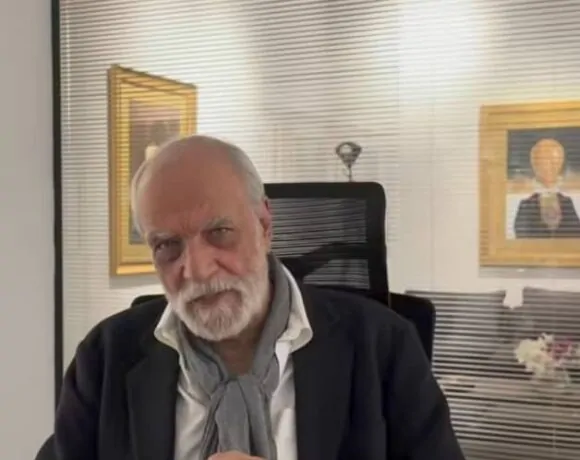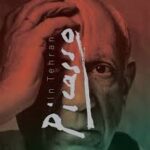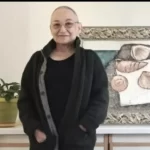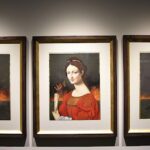
By Houra Khakdaman – Curator and Art Critic
The works of Aydin Aghdashloo function as a nuanced dialogue between temporalities—an invitation to engage with the concealed layers of beauty, memory, and meaning. Among his oeuvre, the recurring presence of scribbled-over paintings stands out as a compelling visual and conceptual gesture. At first glance, these markings may be perceived as chaotic or confrontational; yet, upon closer examination, they reveal themselves as deliberate and philosophically charged interventions.
During the closing ceremony of his exhibition at Gallery B, Aghdashloo articulated the significance of these scribbles not as acts of violence or defacement—particularly toward the feminine visage—but rather as a symbolic manifestation of aesthetic idealism. “These lines,” he explained, “gain meaning only in the presence of the tenderness and grace depicted in the portraits of women.” He further emphasized that if such markings appeared in a more neutral or simplified context, their impact would be greatly diminished. The scribbles thus operate as agents of contrast, staging a confrontation between the enduring beauty of the past and the dismissive tendencies of the contemporary era.
In Aghdashloo’s interpretation, these gestures are not nihilistic but dialectical; they embody a tension between two aesthetic paradigms. “The scribbles derive their significance only in juxtaposition with beauty. Ultimately, they are not acts of destruction, but components of an artistic truth—a truth that confronts the perfection of a bygone era with the apathy of the present,” he stated.
Aghdashloo’s visual language, particularly through these defacements, transcends its material form and edges toward the philosophical. Each viewer is invited to bring their own hermeneutic lens to the work: one might interpret the scribbles as violence against softness; another, as an audacious challenge to perfection; yet another might perceive them as a visual negotiation between epochs. In this way, art fulfills one of its highest functions: to provoke reflection, elicit questioning, and engage the viewer in a process of critical inquiry.
Indeed, works that afford such a broad spectrum of interpretation inherently move beyond visual aesthetics into the domain of conceptual richness. It is precisely this capacity that transforms Aghdashloo’s scribbles from impulsive marks into philosophically resonant statements—ones that open a space for personal and cultural contemplation amid the dialectic of reverence and disregard.
article links:









